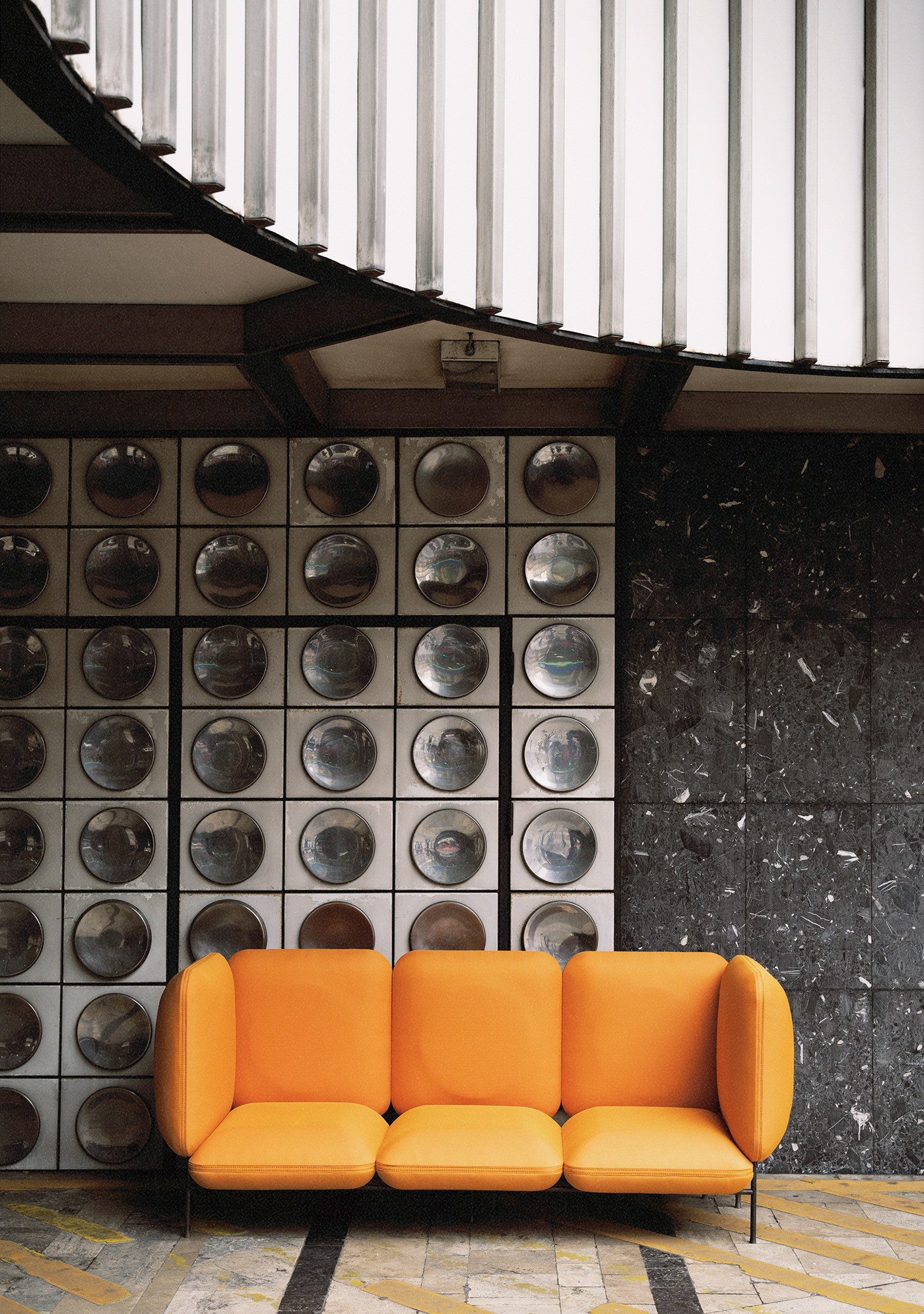
Photo: Artúr Ekler
DEDAS
public seating system



Photo: Anett Pósalaki
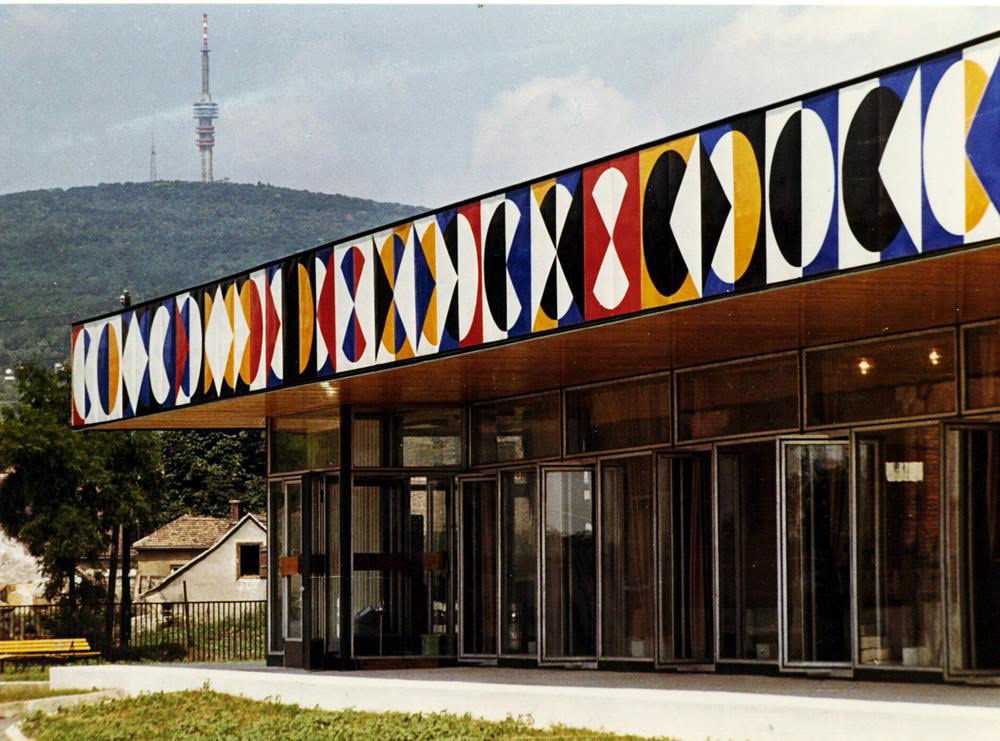
DÉDÁSZ enamel frieze by Ferenc Lantos, archival photo, 1969 source
INSPIRATIONS
The “Magna Mater” of the upholstered seating furniture collection for public spaces is the 3 seater sofa decorated with a uniquely designed pattern, for which the inspiring source was the enamel frieze works of a Hungarian artist, Ferenc Lantos.
The parallel can be found in the regular square backrest and seating element and the geometric editing of the unique pattern specifically designed for this sofa.
However, while Lantos used the circle arranged in a square and the diagonals (strings, rays) intersecting them to the create a hard, masculine pattern, in the case of the seating furniture the enclosing shape softens as the squares appear with rounded corners and the pattern set is completely feminised, partly because the use of the diagonal is completely vanished. Thus, the patterns of each field appear with different phase states of the circle, which can even be understood as analogies of the lunar phases.
Perhaps, the most spectacular feminization is in the spatialization of patterns. The original enamel frieze works are flat in nature due to the sheet metal substrates. In comparison, the lens-like rounding of the spherical surface of the foams and the section plane drawing an outline in its projection result in a vibrantly exciting visual experience. This look also endows the furniture with a strictly edited organicity. Just as Lantos reached for the well-known Bauhaus colours, the patterns from Dedas' 'leading ship’ use this spectrum of pure colours as well. The other members of the family are based on a rich colour palette in monochrome versions.
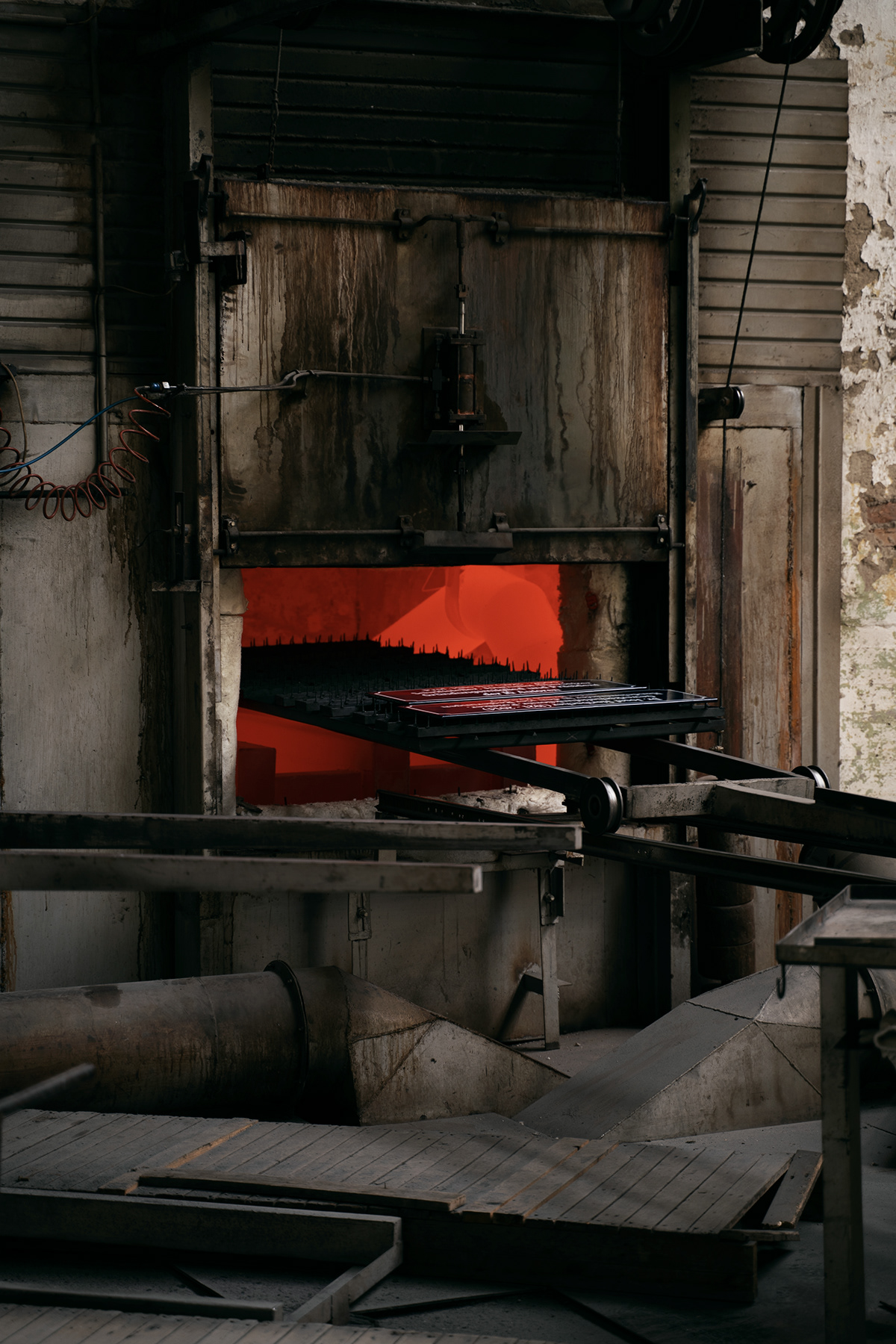
the still existing enamel factory in Bonyhád, where the original artworks were made - these are the supporting spikes that inspired the legs of the furniture Photo: Artúr Ekler, 2022

Photo: Artúr Ekler


Photo: Artúr Ekler
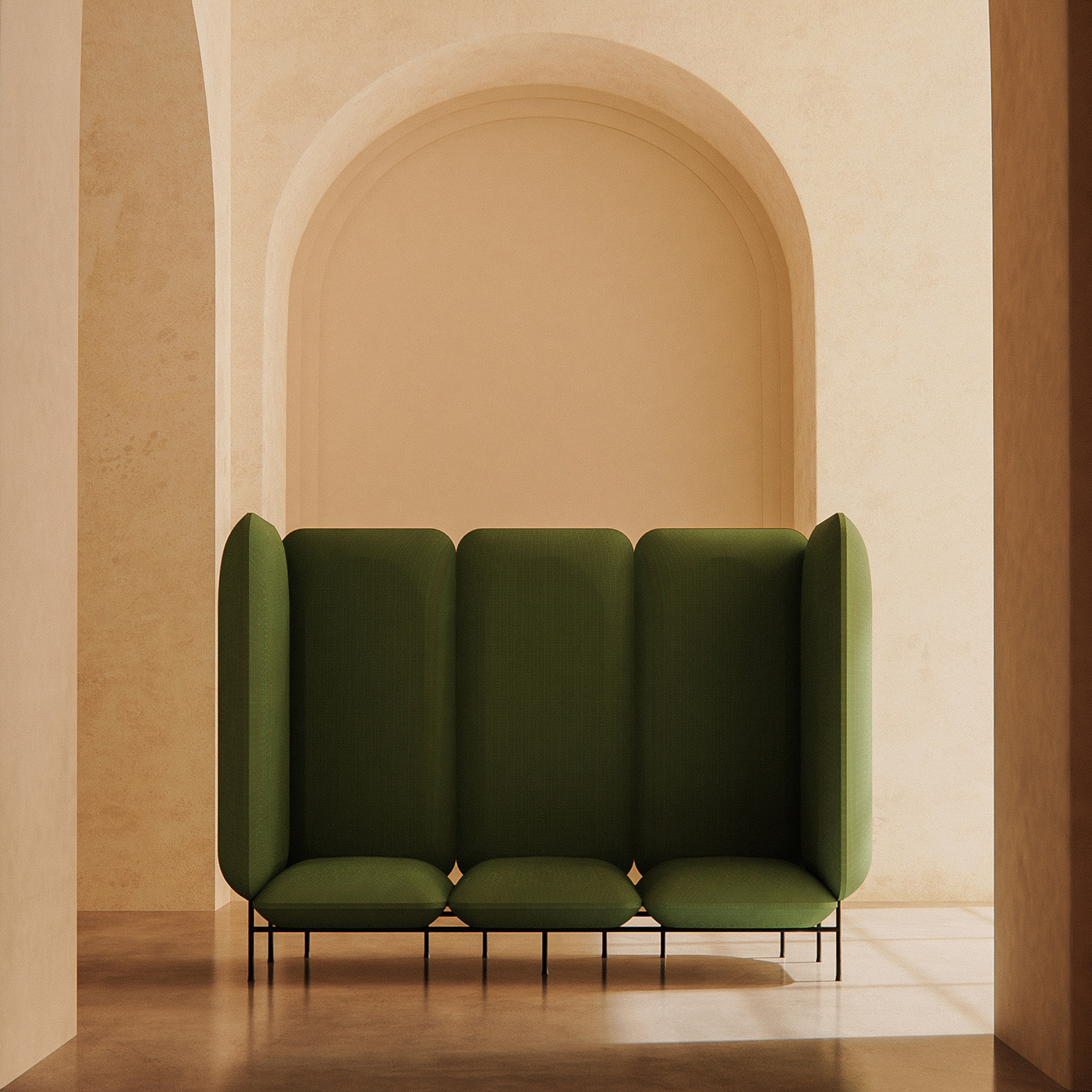
Render: Own

Render: Own
DESCRIPTION
The basic members of the Dedas family are the 1, 2 and 3 seater sofas, but the unique and special feature of the collection is that new functional elements are included in addition to these basic configurations.
An example of this is the higher backrest seating furniture intended for public or office use that provides the intimacy of telephony. The modular structure also holds the possibility to increase and classify the furniture, so it can be feasible on almost any scale. This is not only true laterally, because the seating surfaces can also be reflected on the other side of the back of the furniture, thus creating a spatial furniture island. This space-adjustability is a deliberately designed feature of all elements – the outer surface of the backrest and the system of filigree legs as distinctive features almost suggest/offer the possibility of the furniture playing a central role in public spaces. Dedas is a true “centrepiece”.
In addition to the rigourous design, playful, new features also appear in the Dedas family. If we imagine that in a configuration installed by a wall, the square raster of the backrests continues, the upholstered elements “climbed” on the wall will stand out as both a sound-absorbing surface and a decorative graphic pattern.
The relation between spatial form and the fabric is particularly important for Dedas. The fabric's hexagonal weaving structure has no primary (stated) direction, so it fits perfectly with the 3D curves of the furniture. In addition, this weaving structure is slightly flexible, so it is suitable for their seamless coating.
The colours of the fabrucs are intense, and the two- or three-colour fibre appears iridescent on these complex, rounded shapes, amplifying the sculpture and even shaping and changing it depending on the point of view– giving them an almost trompe-l'œil-like appearance, evoking a visual gesture that also regulates one of Victor Vasarely’s lines of research.
The patinated steel surface of the furniture legs directly reflect on the act of burning – referring to both the process of fire enamelling and the industrial environment. Formally, the protruding leg ends, which provide filigree, point-like support, are analogous to the supports (spikes) used in kilns, on which workpieces covered with “raw” enamel are placed.
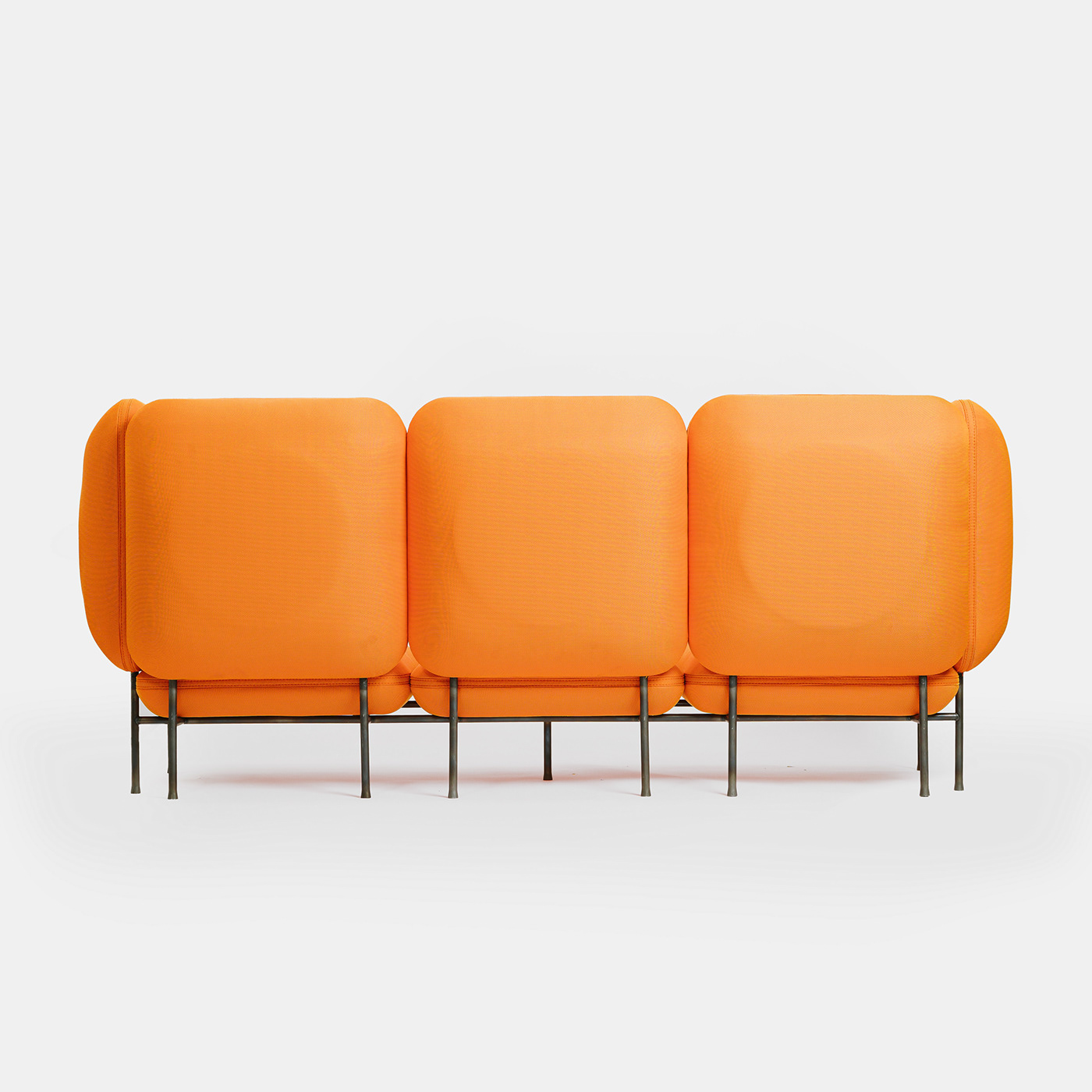
Photo: Milán Rácmolnár
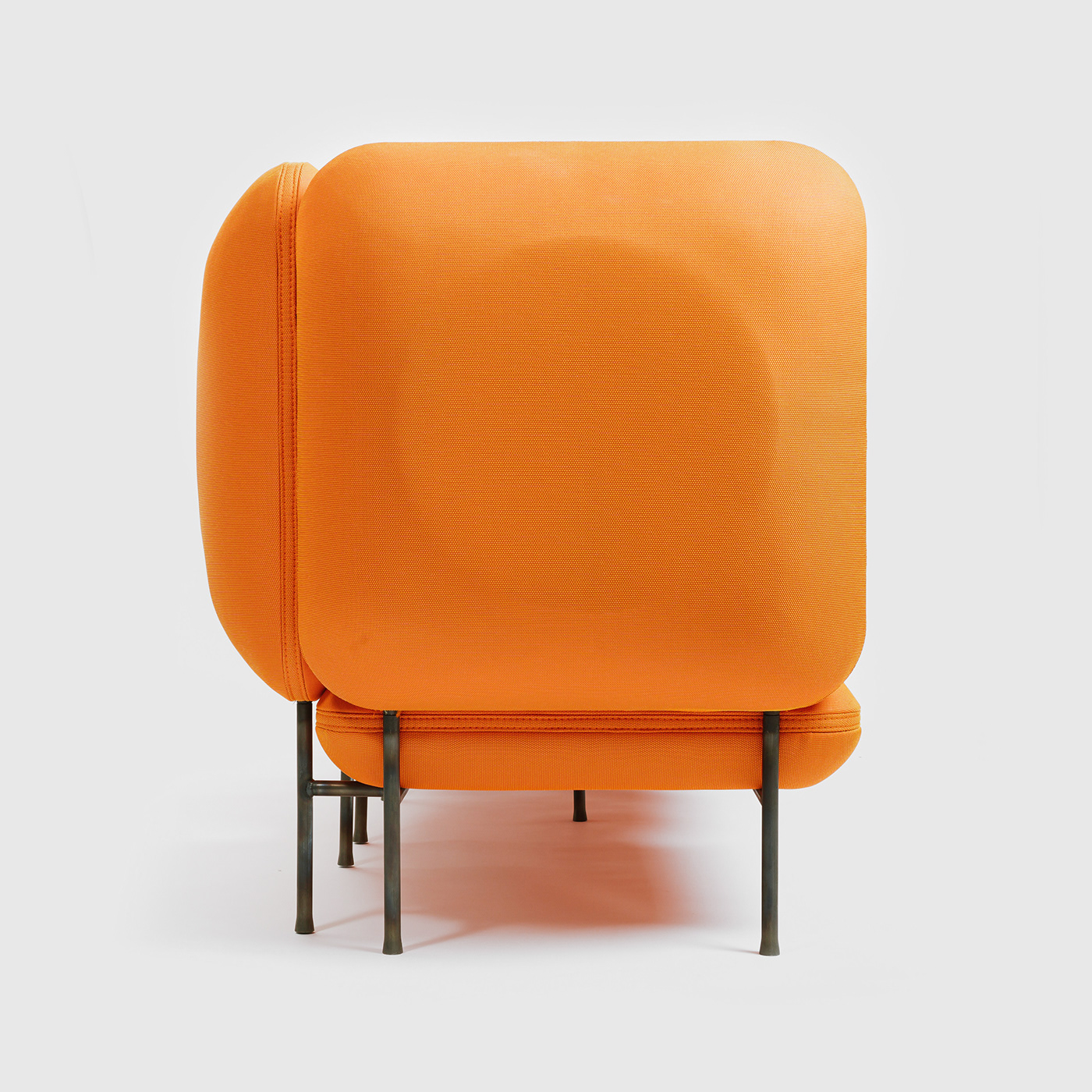
Photo: Milán Rácmolnár




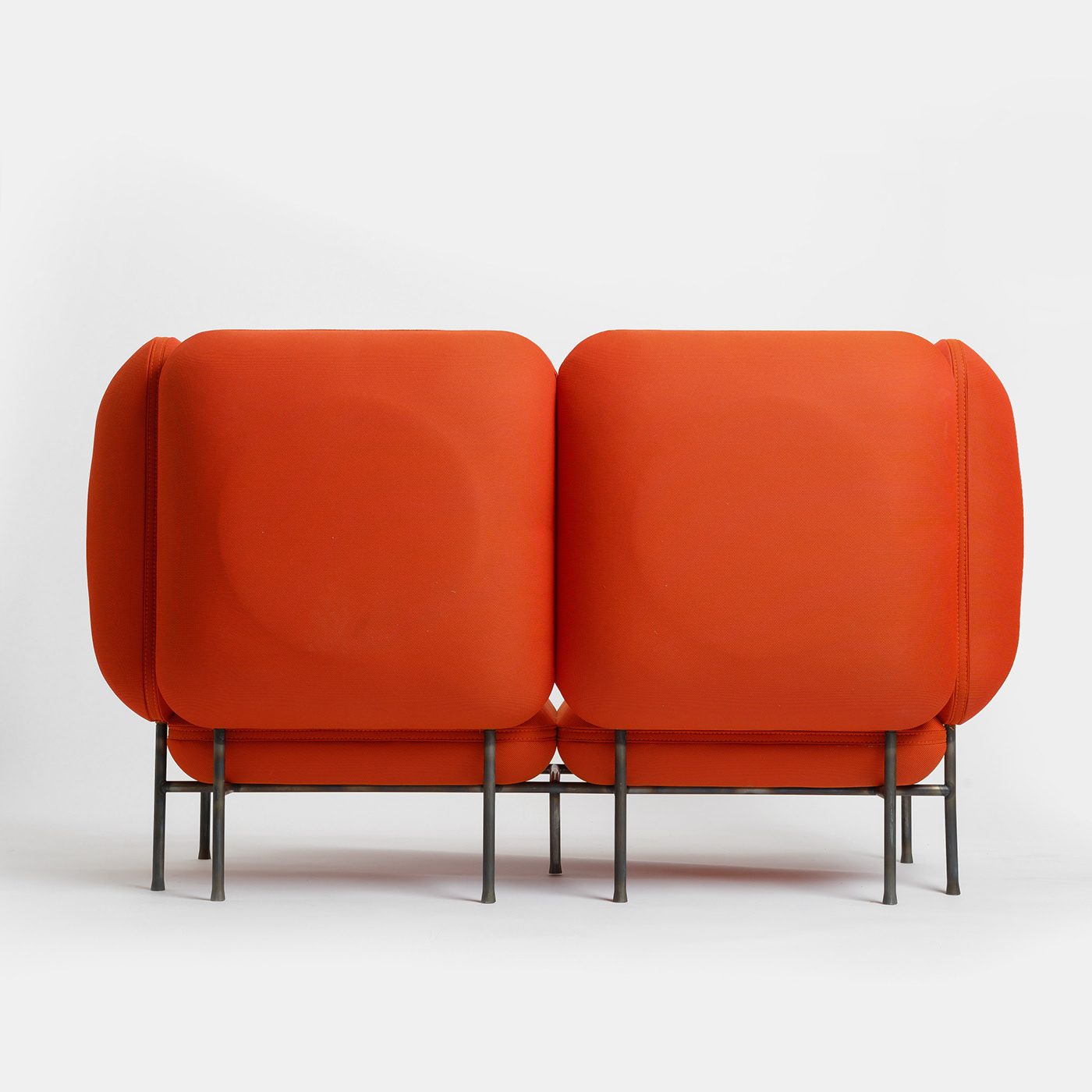
Photo: Milán Rácmolnár
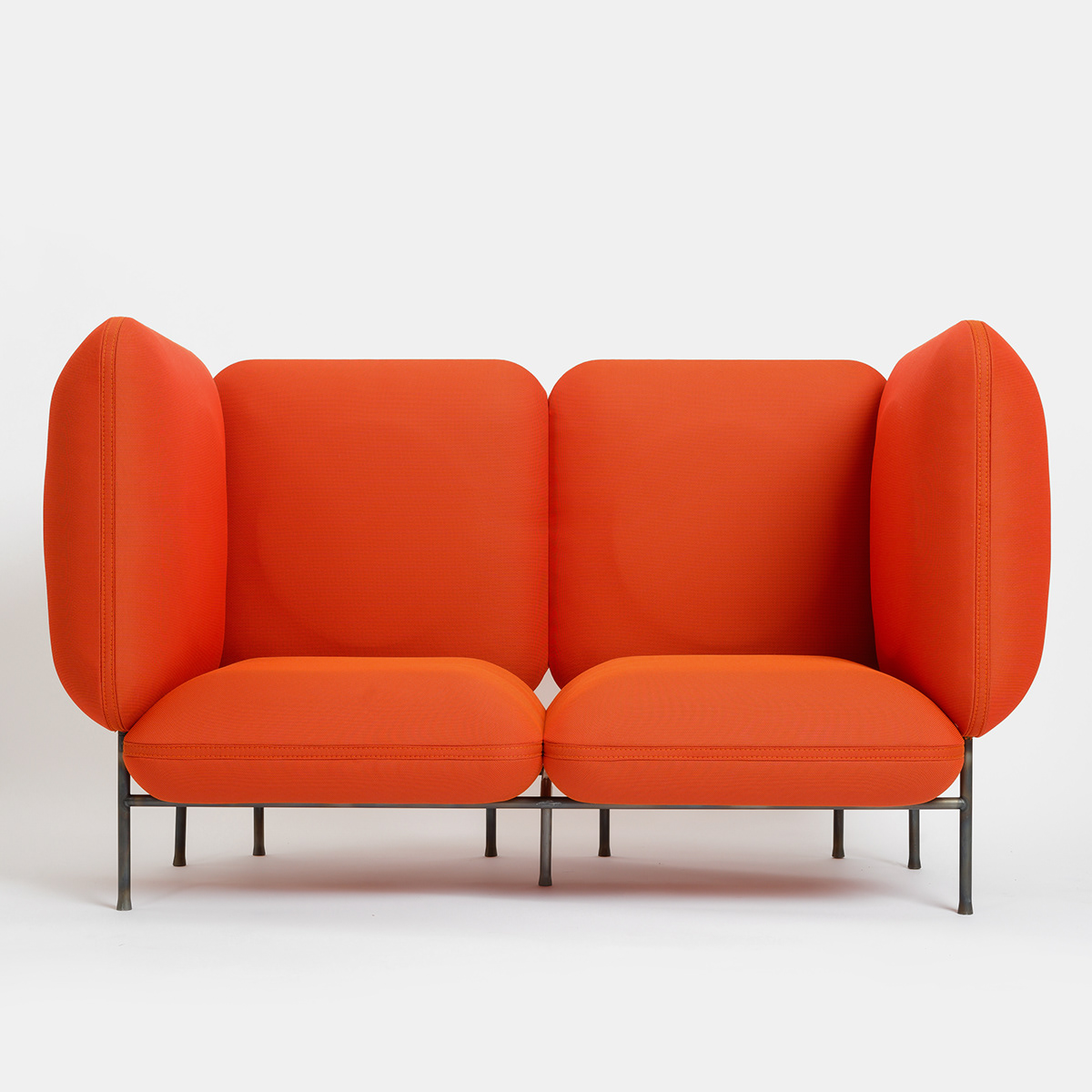
Photo: Milán Rácmolnár
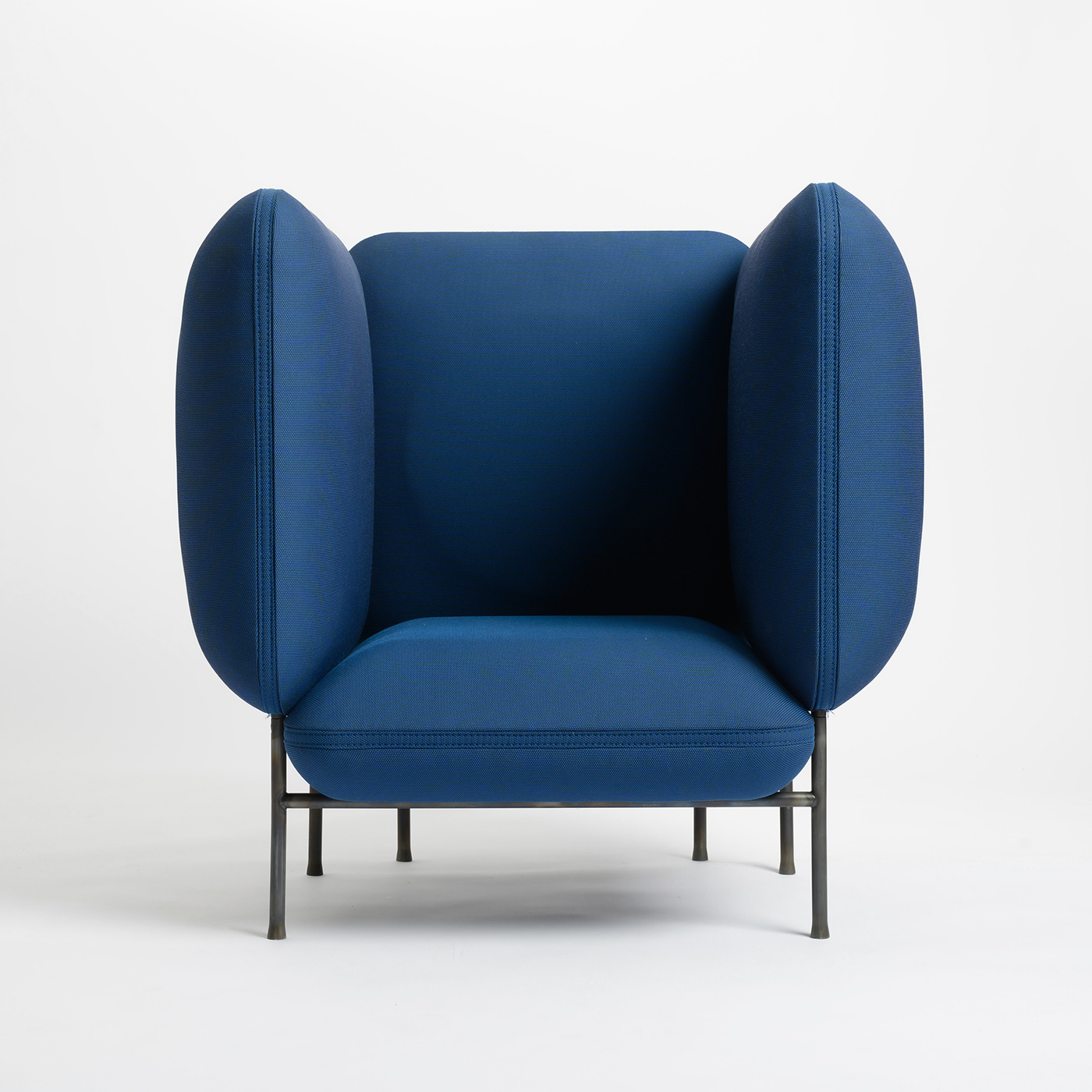
Photo: Milán Rácmolnár


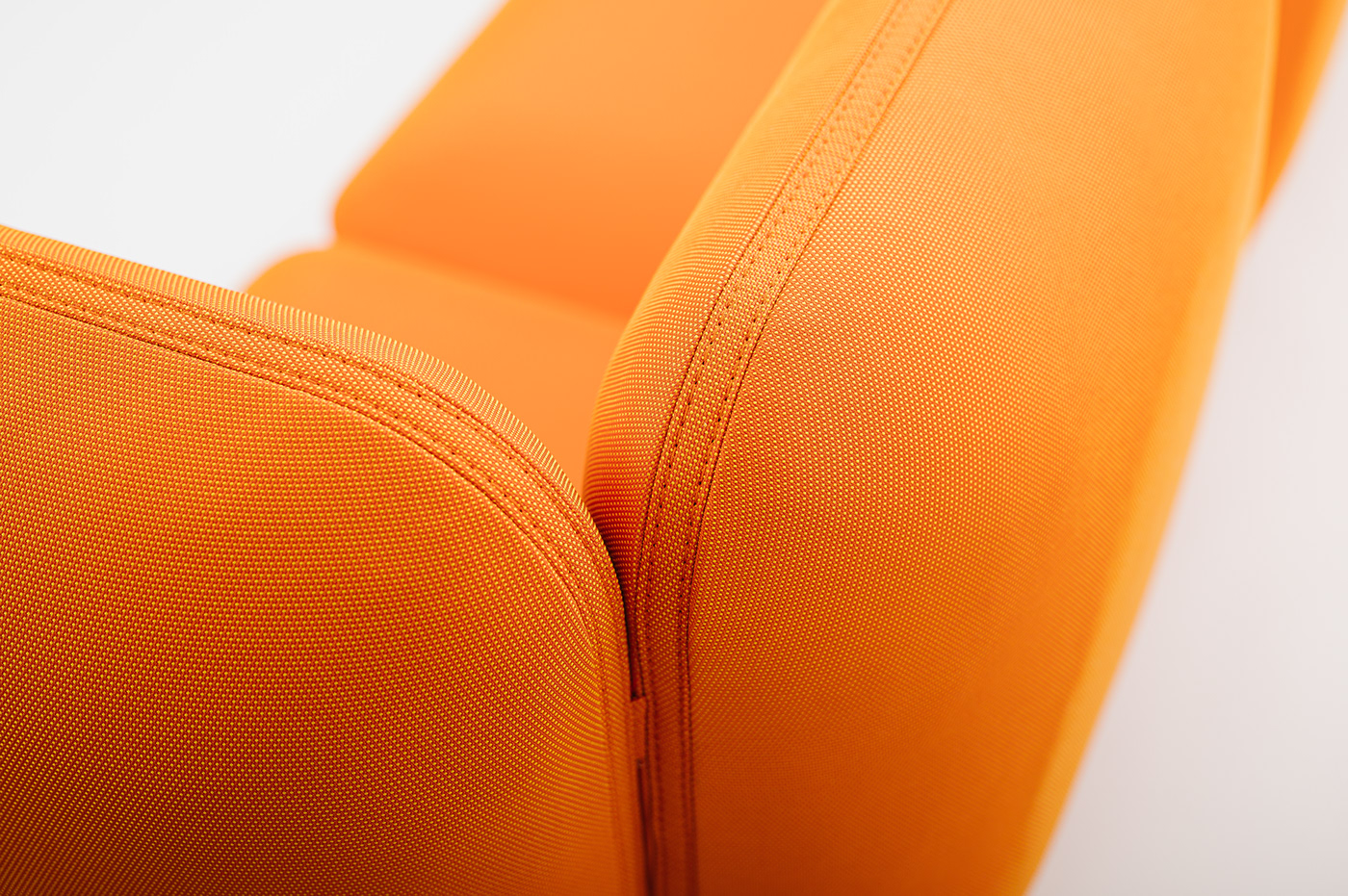
Photo: Milán Rácmolnár

Photo: Artúr Ekler




Photo: Artúr Ekler
TECHNICAL DETAILS
Like all pieces of Burnt Geometry, Dedas were made by Hungarian implementers and manufacturers. The use of local infrastructure was an important consideration in the definition of both technologies and materials – with the exception of the fabric.
The seating furniture was realised during the Design LAB incubation program of the Hungarian Fashion & Design Agency in cooperation with the upholstery firm Kárpitos Partner Group.
The patterned fabricu was made with printing equipment, the contractor was NUANS Textil Kft. The monochrome versions are coated with CLIMATEX® fabrics supplied by the Hungarian representative of the German JAB Joseph Anstoetz KG. CLIMATEX® fabrics are among the few in the textile industry that have the “C to C - Cradle to Cradle” trademark, meaning that the product is 100% recyclable, the fabric can be broken down into raw materials after the expiration of the products lifecycle . These fabrics are otherwise flame retardant and have a wear resistance value of 450,000 martindales, allowing for long-term use in public spaces as well.
The structural designs incorporate a number of professional upholstery feats in line with the designer’s intentions. The foam structure, for example, is cut and unmoulded, yet can result in spatial curved surfaces. Thus, even with small series production capacity, their production remains economical, as there is no need to make expensive casting tools. And if now, at the beginning of the development phase, the geometry or composition of the foams need changes for some reason, those can be accomplished with a minimal investment with a cut foam. The weaving structure of the fabric prevents the accumulation of excess material at the edges of the backrests, even at arches with a smaller radius.This eliminates the need for visible seams. The outer and inner backrest elements can be fitted together just as lego-bricks. The way they are attached to each other, and therefore their structural function, is the result of a unique innovation. Partly, this allows the elements to be replaced with minimal intervention in an event of damage. Here, in the gap between the double-sided backrest modules, is the first successful application of EVA foam in the upholstery industry, as an alternative to traditional welting.
The support of the furniture is a frame structure made of precision tubes, and the patination of the surfaces is entirely performed by IO. The long-term development goal is that the acrylic lacquer protection against the corrosion of the metal frame structure will be replaced by natural surface sealing, such as beeswax.
These features, such as the longer product lifecycle due to high quality, the use of recyclable CLIMATEX® fabric, the use of a steel structure, the heterogeneous (recycled) foam used in the foam layer, the discreet surface treatment technology, or the ease of repair, are all results of purely conscious design decisions that was aimed to result in a family of furniture that is also exemplary in terms of sustainability, renewability and recyclability.



Photo: Anett Pósalaki

Photo: Artúr Ekler






Product and furniture design: Annabella Hevesi
Project management: Gábor Bella, Annabella Hevesi
Photography: Artúr Ekler, Anett Pósalaki, Milán Rácmolnár
Renders: Annabella Hevesi
Logo design: Dare studio
Special thanks to:
Edit Lukács, Fanni Czegle, Gergely Tasnádi, Benedek Bella, acb Gallery, Kálmán Debreceni, Zoltán Merényi, Kárpitos Partner Group Bt., PONTEX Kft., Hungarian Fashion & Design Agency, JAB Anstoetz KG, Nuans Textil, Dare studio
2022
by IO

Has been nominated in the "Product of the year" category
Please, vote for my work HERE


